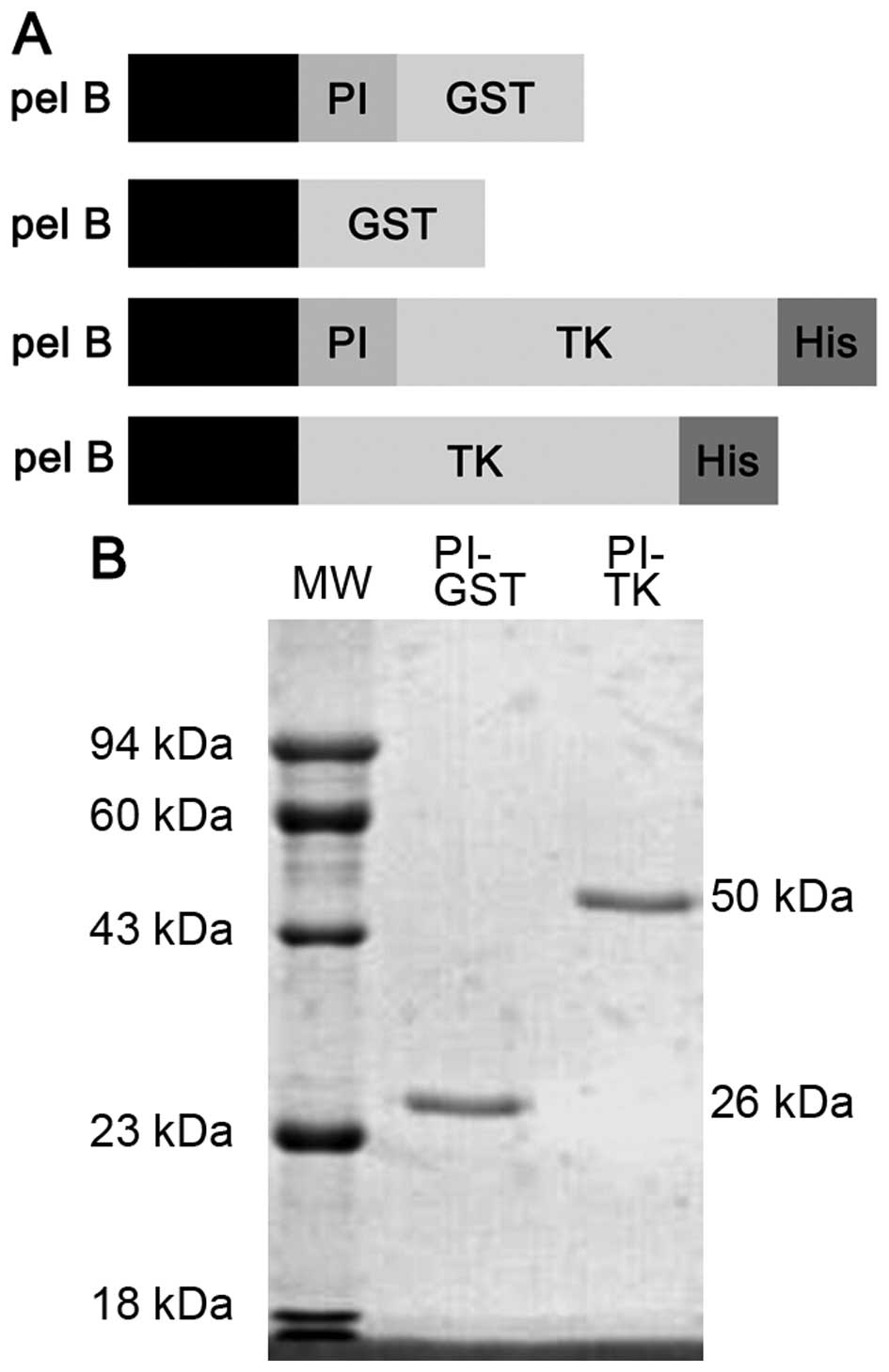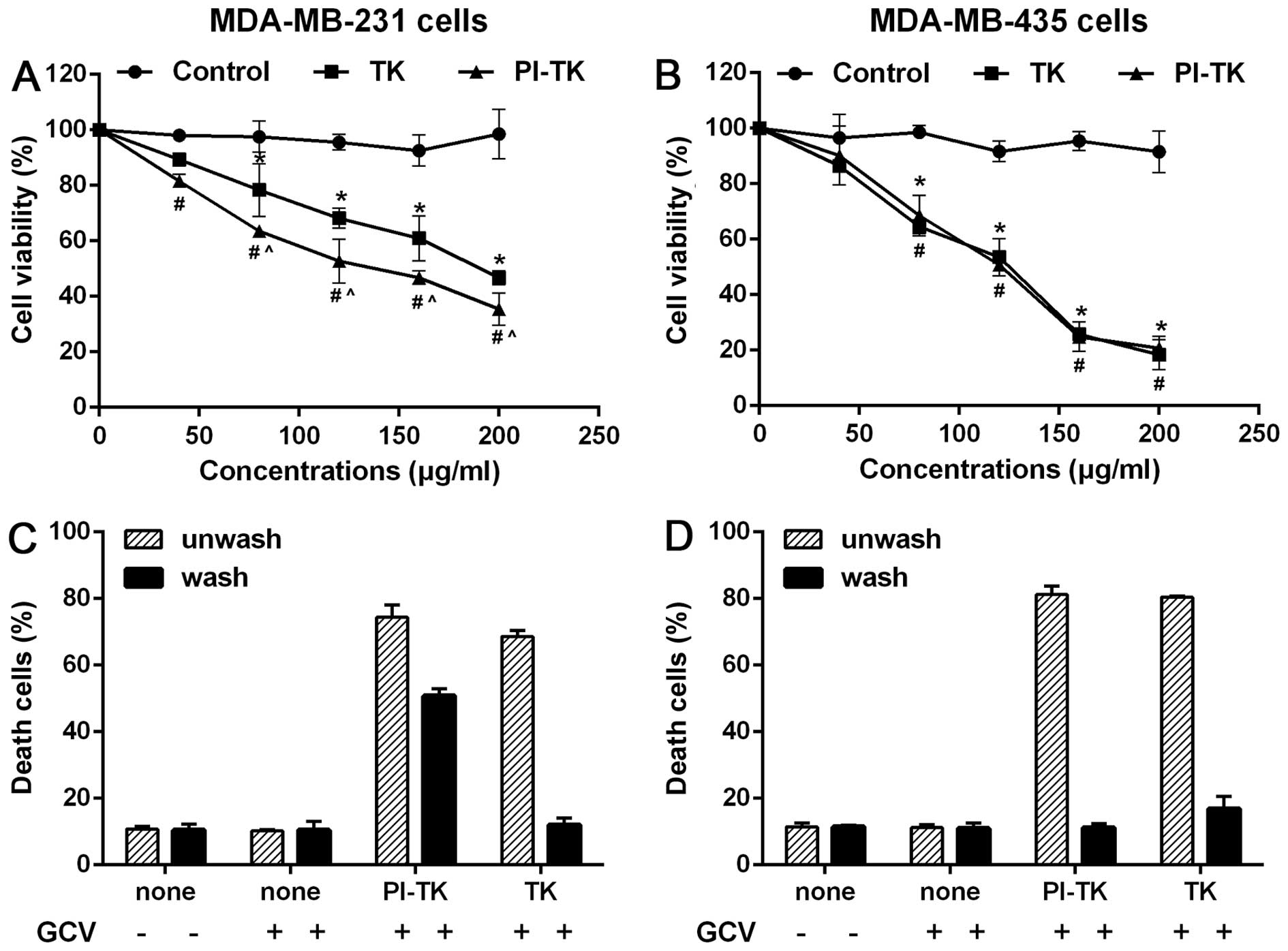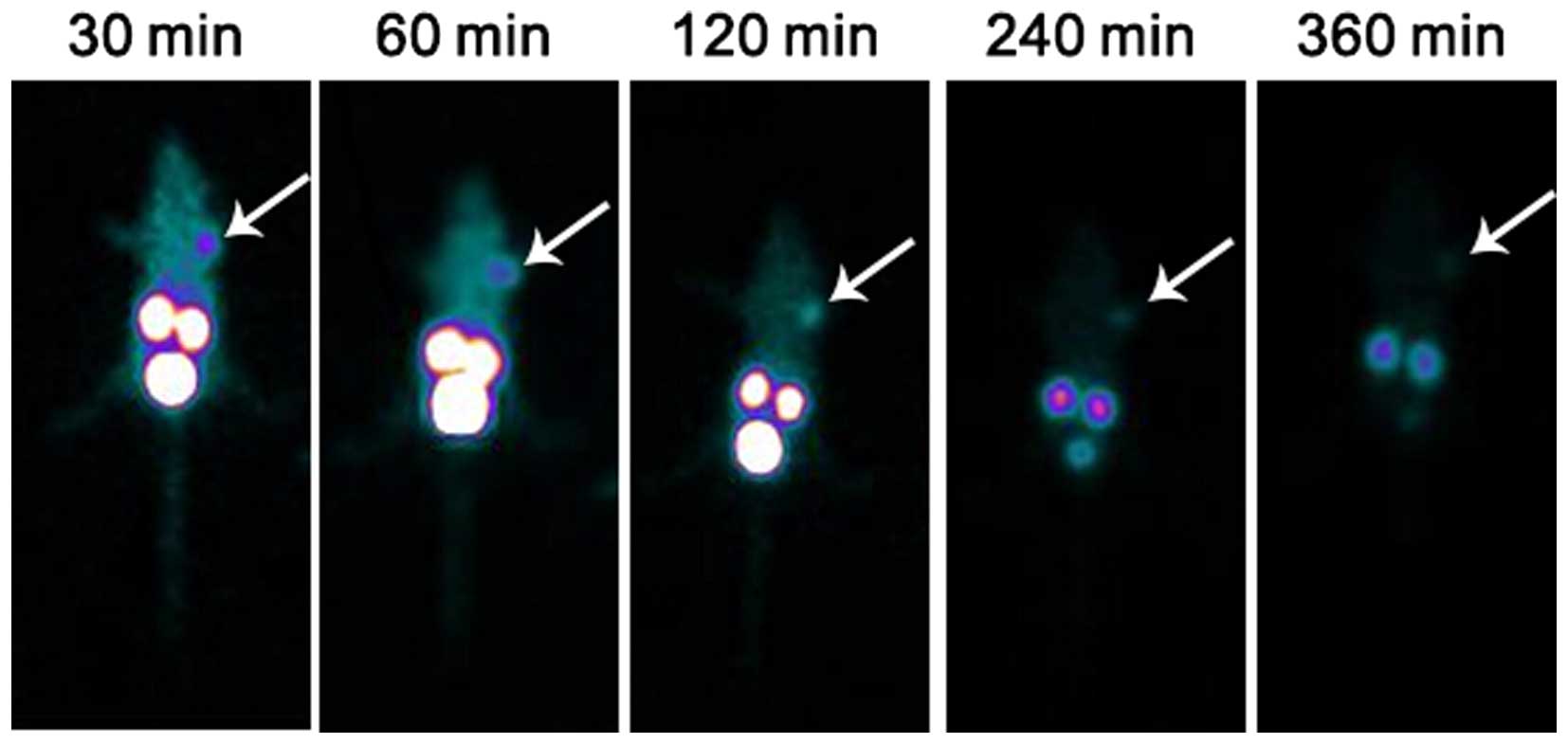|
1
|
Aguas F, Martins A, Gomes TP, de Sousa M
and Silva DP; Portuguese Menopause Society and Portuguese
Gynaecology Society. Prophylaxis approach to a-symptomatic
post-menopausal women: Breast cancer. Maturitas. 52(Suppl 1):
S23–S31. 2005. View Article : Google Scholar : PubMed/NCBI
|
|
2
|
Dumitrescu RG and Cotarla I: Understanding
breast cancer risk - where do we stand in 2005? J Cell Mol Med.
9:208–221. 2005. View Article : Google Scholar : PubMed/NCBI
|
|
3
|
O'Toole SA, Beith JM, Millar EK, West R,
McLean A, Cazet A, Swarbrick A and Oakes SR: Therapeutic targets in
triple negative breast cancer. J Clin Pathol. 66:530–542. 2013.
View Article : Google Scholar : PubMed/NCBI
|
|
4
|
Hurley J, Reis IM, Rodgers SE,
Gomez-Fernandez C, Wright J, Leone JP, Larrieu R and Pegram MD: The
use of neoadjuvant platinum-based chemotherapy in locally advanced
breast cancer that is triple negative: Retrospective analysis of
144 patients. Breast Cancer Res Treat. 138:783–794. 2013.
View Article : Google Scholar : PubMed/NCBI
|
|
5
|
Al-Ejeh F, Shi W, Miranda M, Simpson PT,
Vargas AC, Song S, Wiegmans AP, Swarbrick A, Welm AL, Brown MP, et
al: Treatment of triple-negative breast cancer using
anti-EGFR-directed radioimmunotherapy combined with
radiosensitizing chemotherapy and PARP inhibitor. J Nucl Med.
54:913–921. 2013. View Article : Google Scholar : PubMed/NCBI
|
|
6
|
Rodler E, Korde L and Gralow J: Current
treatment options in triple negative breast cancer. Breast Dis.
32:99–122. 2010.
|
|
7
|
De Laurentiis M, Cianniello D, Caputo R,
Stanzione B, Arpino G, Cinieri S, Lorusso V and De Placido S:
Treatment of triple negative breast cancer (TNBC): Current options
and future perspectives. Cancer Treat Rev. 36(Suppl 3): S80–S86.
2010. View Article : Google Scholar : PubMed/NCBI
|
|
8
|
Kummar S, Kinders R, Gutierrez ME,
Rubinstein L, Parchment RE, Phillips LR, Ji J, Monks A, Low JA,
Chen A, et al: Phase 0 clinical trial of the poly (ADP-ribose)
polymerase inhibitor ABT-888 in patients with advanced
malignancies. J Clin Oncol. 27:2705–2711. 2009. View Article : Google Scholar : PubMed/NCBI
|
|
9
|
Helleday T, Bryant HE and Schultz N: Poly
(ADP-ribose) polymerase (PARP-1) in homologous recombination and as
a target for cancer therapy. Cell Cycle. 4:1176–1178. 2005.
View Article : Google Scholar : PubMed/NCBI
|
|
10
|
Koren E and Torchilin VP: Cell-penetrating
peptides: Breaking through to the other side. Trends Mol Med.
18:385–393. 2012. View Article : Google Scholar : PubMed/NCBI
|
|
11
|
Ryu JS, Kuna M and Raucher D: Penetrating
the cell membrane, thermal targeting and novel anticancer drugs:
The development of thermally targeted, elastin-like polypeptide
cancer therapeutics. Ther Deliv. 5:429–445. 2014. View Article : Google Scholar : PubMed/NCBI
|
|
12
|
Dong J, Liu W, Jiang A, Zhang K and Chen
M: A novel peptide, selected from phage display library of random
peptides, can efficiently target into human breast cancer cell.
Chin Sci Bull. 53:860–867. 2008. View Article : Google Scholar
|
|
13
|
Zadeh G, Qian B, Okhowat A, Sabha N,
Kontos CD and Guha A: Targeting the Tie2/Tek receptor in
astrocytomas. Am J Pathol. 164:467–476. 2004. View Article : Google Scholar : PubMed/NCBI
|
|
14
|
De Palma M, Venneri MA and Naldini L: In
vivo targeting of tumor endothelial cells by systemic delivery of
lentiviral vectors. Hum Gene Ther. 14:1193–1206. 2003. View Article : Google Scholar : PubMed/NCBI
|
|
15
|
Green M and Loewenstein PM: Autonomous
functional domains of chemically synthesized human immunodeficiency
virus tat trans-activator protein. Cell. 55:1179–1188. 1988.
View Article : Google Scholar : PubMed/NCBI
|
|
16
|
Frankel AD and Pabo CO: Cellular uptake of
the tat protein from human immunodeficiency virus. Cell.
55:1189–1193. 1988. View Article : Google Scholar : PubMed/NCBI
|
|
17
|
Du B, Han H, Wang Z, Kuang L, Wang L, Yu
L, Wu M, Zhou Z and Qian M: targeted drug delivery to
hepatocarcinoma in vivo by phage-displayed specific binding
peptide. Mol Cancer Res. 8:135–144. 2010. View Article : Google Scholar : PubMed/NCBI
|
|
18
|
Li ZJ, Wu WKK, Ng SSM, Yu L, Li HT, Wong
CC, Wu YC, Zhang L, Ren SX, Sun XG, et al: A novel peptide
specifically targeting the vasculature of orthotopic colorectal
cancer for imaging detection and drug delivery. J Control Release.
148:292–302. 2010. View Article : Google Scholar : PubMed/NCBI
|
|
19
|
Zhang L, Yin G, Yan D, Wei Y, Ma C, Huang
Z, Liao X, Yao Y, Chen X and Hao B: In vitro screening of ovarian
tumor specific peptides from a phage display peptide library.
Biotechnol Lett. 33:1729–1735. 2011. View Article : Google Scholar : PubMed/NCBI
|
|
20
|
Yu Z, Wu J, Wu S, Jia P, Tong Y, Wu X and
Wang Y: A recombinant cell-permeable p53 fusion protein is
selectively stabilized under hypoxia and inhibits tumor cell
growth. Cancer Lett. 279:101–107. 2009. View Article : Google Scholar : PubMed/NCBI
|
|
21
|
Hu M, Wang J, Chen P and Reilly RM: HIV-1
Tat peptide immunoconjugates differentially sensitize breast cancer
cells to selected antiproliferative agents that induce the
cyclin-dependent kinase inhibitor p21WAF-1/CIP-1. Bioconjug Chem.
17:1280–1287. 2006. View Article : Google Scholar : PubMed/NCBI
|
|
22
|
Bitler BG, Menzl I, Huerta CL, Sands B,
Knowlton W, Chang A and Schroeder JA: Intracellular MUC1 peptides
inhibit cancer progression. Clin Cancer Res. 15:100–109. 2009.
View Article : Google Scholar : PubMed/NCBI
|
|
23
|
Massodi I, Bidwell GL III, Davis A,
Tausend A, Credit K, Flessner M and Raucher D: Inhibition of
ovarian cancer cell metastasis by a fusion polypeptide Tat-ELP.
Clin Exp Metastasis. 26:251–260. 2009. View Article : Google Scholar : PubMed/NCBI
|
|
24
|
Bidwell GL III, Davis AN and Raucher D:
Targeting a c-Myc inhibitory polypeptide to specific intracellular
compartments using cell penetrating peptides. J Control Release.
135:2–10. 2009. View Article : Google Scholar
|
|
25
|
Harada H, Hiraoka M and Kizaka-Kondoh S:
Antitumor effect of TAT-oxygen-dependent degradation-caspase-3
fusion protein specifically stabilized and activated in hypoxic
tumor cells. Cancer Res. 62:2013–2018. 2002.PubMed/NCBI
|
|
26
|
Takada Y, Singh S and Aggarwal BB:
Identification of a p65 peptide that selectively inhibits NF-kappa
B activation induced by various inflammatory stimuli and its role
in down-regulation of NF-kappaB-mediated gene expression and
up-regulation of apoptosis. J Biol Chem. 279:15096–15104. 2004.
View Article : Google Scholar : PubMed/NCBI
|
|
27
|
Tan M, Lan K-H, Yao J, Lu CH, Sun M, Neal
CL, Lu J and Yu D: Selective inhibition of ErbB2-overexpressing
breast cancer in vivo by a novel TAT-based ErbB2-targeting signal
transducers and activators of transcription 3-blocking peptide.
Cancer Res. 66:3764–3772. 2006. View Article : Google Scholar : PubMed/NCBI
|
|
28
|
Miller WH, Alberts DP, Bhatnagar PK,
Bondinell WE, Callahan JF, Calvo RR, Cousins RD, Erhard KF,
Heerding DA, Keenan RM, et al: Discovery of orally active
nonpeptide vitro-nectin receptor antagonists based on a
2-benzazepine Gly-Asp mimetic. J Med Chem. 43:22–26. 2000.
View Article : Google Scholar : PubMed/NCBI
|
|
29
|
Zhao H, Wang J-C, Sun Q-S, Luo C-L and
Zhang Q: RGD-based strategies for improving antitumor activity of
paclitaxel-loaded liposomes in nude mice xenografted with human
ovarian cancer. J Drug Target. 17:10–18. 2009. View Article : Google Scholar
|
|
30
|
Burrows FJ, Gore M, Smiley WR, Kanemitsu
MY, Jolly DJ, Read SB, Nicholas T and Kruse CA: Purified herpes
simplex virus thymidine kinase retroviral particles: III.
Characterization of bystander killing mechanisms in transfected
tumor cells. Cancer Gene Ther. 9:87–95. 2002. View Article : Google Scholar : PubMed/NCBI
|














